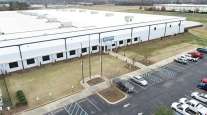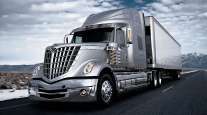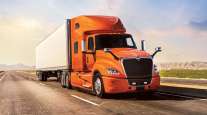Senior Reporter
Navistar Likes Its Position in Fast-Changing Trucking Sector

[Stay on top of transportation news: Get TTNews in your inbox.]
The head of Navistar International Corp. is aiming to reclaim the market strength the company previously owned in the North American Class 8 market, and believes it has the plan and leadership to do it.
“[We have] a desire to win, desire to overcome and bring Navistar back as the recognized brand that we have been and that we certainly will be in the future,” said Mathias Carlbaum, who took over as the company’s CEO in August, during a Feb. 4 media call. “Having solid ownership with a group that is really thinking long term enables choices to be made that takes us in the right direction. Not only in three to five years, but looking at 10-15 years,” he said.
A look back offers perspective on Carlbaum’s goal.
In February 2000, Navistar’s International brand posted the second-most U.S. Class 8 retail sales — 3,220, good for 17.4% share, Wards Intelligence reported at the time. Fast forward to December 2021, and International earned an 8.6% share of the U.S. Class 8 market on sales of 2,131, according to Wards.
In the interim, Navistar suffered sales declines when its MaxxForce engines — which offered an in-cylinder emissions reduction strategy that wound up failing in the marketplace — resulted in a downturn in the company’s sales.
[We have] a desire to win, desire to overcome and bring Navistar back as the recognized brand that we have been and that we certainly will be in the future.
Navistar CEO Mathias Carlbaum
Germany-based Traton Group acquired Navistar last July, adding it to a global suite of brands that include Scania, MAN, Volkswagen Caminhões e Ônibus and Rio. Traton went public in 2019 after it was spun off from Volkswagen.
The kind of growth Carlbaum wants to lead was “something a bit more difficult for Navistar in the past, given the situation the company was in,” he said, but also believes the global scale it now has brings with it opportunities.
Carlbaum described modularization of parts as a religion in the group. “By going modular, you have less components and you get scale of those components,” he said. “With common interfaces, the exchange between the brands goes easier. It decreases the amount of parts that need to be handled and stored both for the aftermarket and production.”
Navistar Photo Gallery
Check out some of Navistar's trucks and products.
An LT Series Truck. (Navistar International Corp.)
Specific to his company, Carlbaum said Navistar’s market presence will grow, “with the toolbox we have — closeness to our customers, closeness to our dealers and continuously enhancing the quality and features of today’s products. At the same time, raising our views for what is to come — all of this under the umbrella of a true commitment we have to go toward zero emissions.”
Truck electrification for regional trucks and in medium-duty is the near-term foundation for that, he said. That experience will prepare Navistar for the eventual day when the business and use case for Class 8 trucks get stronger.
“We won’t be late when it is the moment for it,” Carlbaum said, looking toward the day when technologies make it possible for electrified longhaul trucks to cover 450 miles on 1 megawatt of battery capacity.
Charging capacity also will need to evolve. He said mega chargers will be coming around the end of 2024 or 2025 with a charging time of around 35 minutes. “That’s when it starts making sense,” he said.
While he said there is a user case for hydrogen, as a truck fuel it has less energy efficiency compared with battery-electric powertrains. He sees hydrogen as a bridge for long-range applications, while batteries and charging technology improve to help move electrification into the longhaul Class 8 space, around 2027-28.
“We see today the perfect point of balance of profit and planet and people is just some years away. There is no trade-off between those,” Carlbaum said. “It’s really, really coming together.”
A close-up look at @TuSimpleAI’s autonomous driving technology outfitted on a Class 8 International tractor here at #CES2022. @IntnlTrucks @NavistarNews pic.twitter.com/SxN5pZKhBB — Seth Clevenger (@SethClevenger) January 5, 2022
Navistar has generated 25,000 data points to shape how it sees this zero-emission transition, he said, “within different segments, states and technologies. It’s our truth, or our best view of how we see the future play out.”
Still, he believes diesel will have a long future. “Its peak is still ahead of us” and important fuel savings are still possible, he said.
For instance, International’s European sister brand Scania has developed a new 13-liter engine platform equipped with dual over-head camshafts, optimized injectors, improved combustion, an optimized high-pressure fuel pump, improved cooling and lubrication, increased turbocharger efficiency and a state-of-the-art engine management system that reaches up to 50% in brake thermal efficiency, which is a measure of fuel efficiency. More stringent truck emissions rules are slated for the U.S. in 2024 and 2027.
Carlbaum led the post-merger management of Navistar on behalf of Traton Group. From where he sits, he sees Navistar as “the biggest opportunity in trucking and transportation sector, right now, in the world.”
Want more news? Listen to today's daily briefing below or go here for more info:





